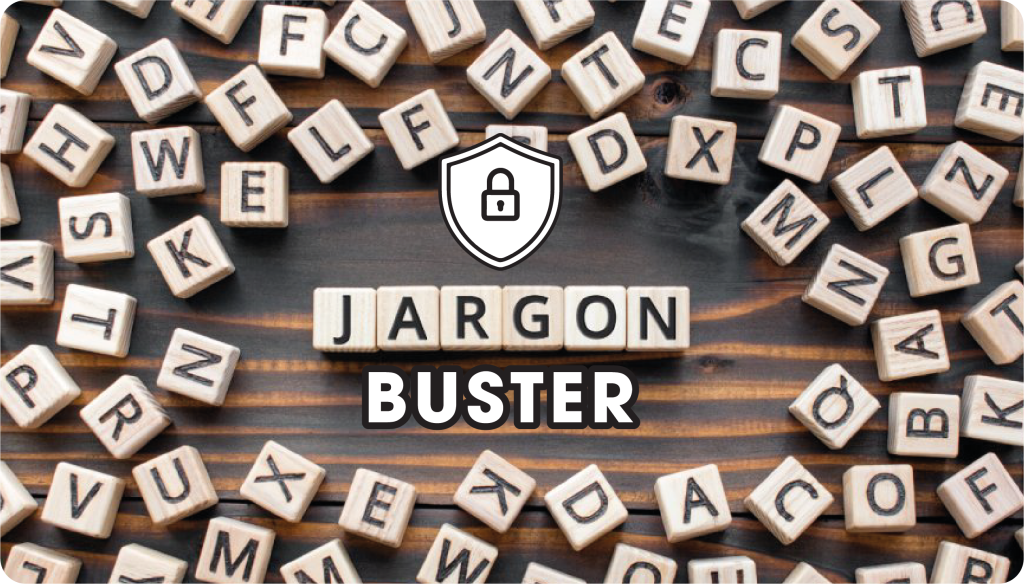Jargon Buster: Demystifying IT Terminology
Cybersecurity Edition

Jargon Buster
The jargon buster aims to give simple, plain English explanations of typical words and/or phrases used in security and cybersecurity, making it easier to stay informed.
Zero Trust:
Security approach assuming no inherent trust, requiring continual user and device authentication.
Phishing:
Cyberattack where malicious actors impersonate entities to trick individuals into revealing sensitive information.
Ransomware:
Malicious software encrypting files, demanding ransom for decryption; paying does not guarantee data return.
Malware:
Malicious software (viruses, Trojans, worms, spyware) designed to harm or exploit computer systems.
Penetration Testing (Pen Test):
Simulating cyberattacks to identify system vulnerabilities and weaknesses.
Multi-Factor Authentication (MFA):
Security process requiring two or more forms of identification for enhanced login security.
Firewall:
Network security device or software filtering traffic based on predefined rules, acting as a barrier between trusted and untrusted networks.
Encryption:
Converting data into code to prevent unauthorised access, ensuring unreadability without decryption key.
Cyber Threat Intelligence (CTI):
Information about potential cybersecurity threats, including tactics employed by malicious actors.
Incident Response (IR):
Structured approach to addressing and managing the aftermath of a cybersecurity incident.
Patch Management:
Regularly updating software, operating systems, and applications to fix known vulnerabilities.
DDoS Attack (Distributed Denial of Service):
Attack flooding a target system with traffic from compromised computers (botnets).
Vulnerability Assessment:
Identifying, classifying, and prioritising security vulnerabilities in systems, networks, and applications.
Two-Factor Authentication (2FA):
Security process requiring users to provide two authentication factors for enhanced login security.
Endpoint Security:
Protection of individual devices from cybersecurity threats.
Data Breach: Incident where sensitive data is accessed, disclosed, or stolen by unauthorized individuals or entities.
Security Audit:
Evaluation of an organisation’s security policies, practices, and controls for effectiveness and compliance.
SOC (Security Operations Centre):
Centralised unit monitoring, detecting, and responding to cybersecurity incidents in real-time.
DMZ (Demilitarised Zone):
Network segment separating internal and external networks, often used for public-facing services.
SIEM (Security Information and Event Management):
Software providing real-time analysis of security alerts from various network sources.
Want to learn more about our services?
Other Articles & Blogs
What SMEs Can Learn from the M&S Attack
What SMEs Can Learn from the M&S AttackIn April, Marks & Spencer suffered a ransomware attack that encrypted critical servers, bringing contactless payments, online orders, and click-and-collect services to a standstill. Recovery took 15 weeks and even a...
The True Cost of IT Downtime for UK SMEs
UK SMEs lose up to 2 working days and £7,500 per year due to unplanned IT downtime — a hidden drain on productivity, morale, and revenue. This article explores the true financial and operational costs of downtime, key causes like outdated hardware and cybersecurity threats, and why a proactive IT strategy is essential for business continuity. Unity World helps SMEs stay ahead with preventative solutions and expert support tailored to their growth.
Unity News & Events
Unity News & Events: Building Stronger Connections One Conversation at a Time Out and About in the North EastIt’s been a big season for connection-building at Unity! Michael Long’s been out meeting local businesses, listening to challenges, and exploring how we...



